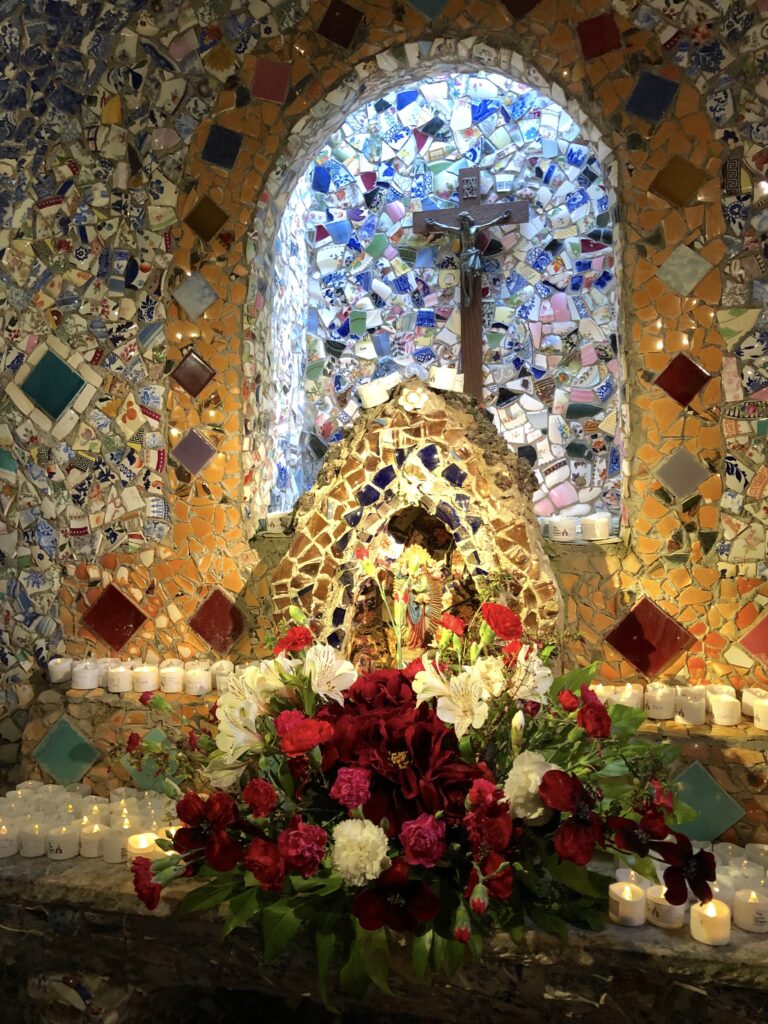Seashells and Big Dreams: How a Determined Monk Built One of the World’s Smallest Chapels on Guernsey
The Little Chapel is one of Guernsey’s most popular and beloved visitor attractions. Located in Les Vauxbelets, the non-denominational structure measures a minute 16 x 9 feet and offers a look into the mind of a determined French monk who almost singlehandedly crafted one of the world’s smallest and ornate chapels.

© Curious Archive, 2020
History and Construction
The current Little Chapel at Les Vauxbelets is the third reconstruction of the original 1914 site built by Brother Deodat Antoine, a former member of France’s Order de la Salle. The Roman Catholic Order, dedicated to the education of boys, relocated to Guernsey after laws banning faith schools were passed in France. Newly established as the Order at les Vauxbelets, Brother Deodat began work on the first Little Chapel shortly after joining his brothers in Guernsey during December of 1913.
Brother Deodat originally aimed to reconstruct the Grotto of Massabielle from France’s Our Lady of Lourdes, a popular pilgrimage destination where St Bernadette is said to have received visions of the Virgin Mary in 1858. The site’s reputation also stems from anecdotes of the Grotto’s water possessing healing properties. Whether Brother Deodat hoped his recreation on Guernsey would garner the same results is uncertain, but the Grotto clearly held an important enough place in his heart to justify the laborious project that followed.
Construction on the first version of Brother Deodat’s Little Chapel began in March 1914 despite the outbreak of WWI making building materials scarce. The original chapel (with focus on the grotto) was very small and measured only 9 by 4.5 feet. After receiving criticism for its size, Brother Deodat hastily tore down the structure the night following its completion. A short time later he began work on the second version of the grotto which was completed and blessed in July 1914. This grotto was slightly larger, accommodating up to four people. Version two remained untouched until September 1923 when it was demolished after the Bishop of Portsmouth, said to have been a large man, was unable to fit through the doorway.

© Curious Archive, 2020
The current and final Little Chapel at Les Vauxbelets was built by Brother Deodat above the second reconstruction of the grotto. Since this version of Brother Deodat’s vision remains, it must have been considered a satisfactory size by his formally critical brothers. But the Chapel’s size wasn’t the only obstacle. Achieving the unique aesthetic of the exterior and interior surfaces was a time-consuming task for Brother Deodat who collected pebbles, seashells, and broken china and pottery around the island to achieve the Chapel’s otherworldly glow. It wasn’t long before his continuous labour received warranted attention. After the Daily Mirror featured an illustrated article of the Little Chapel, Brother Deodat’s project skyrocketed in popularity. Coloured china was brought by islanders and gifts were sent from all over the world. The Lieutenant Governor at the time of construction even offered a mother-of-pearl.
Due to poor health, Brother Deodat returned to France in 1939 and sadly passed away before seeing the completion of his chapel. Care of the Little Chapel was passed on to Brother Cephas who, until his retirement in 1965, continued to add to the building’s ornate décor. Though he was never able to enjoy the completed version of his life’s work, Brother Deodat’s Little Chapel has become a cherished site on Guernsey.
Ongoing Restoration
The Little Chapel Foundation was created in August of 2016 after the Chapel was gifted to the foundation by the De la Salle Brothers. Numerous issues with vandalism and general upkeep have occurred throughout the years, requiring a considerable amount of money and manpower to rectify. Donate to The Little Chapel Foundation to help restoration efforts here.

© Curious Archive, 2020
Visiting
The Little Chapel continues to welcome visitors on Guernsey today. The Chapel stretches across three small levels, the main nave space leading down to the crypt and grotto before filtering back outside. Generally, the Chapel is large enough to accommodate ten standing adults, though busier days might prove claustrophobic. Visits to the Little Chapel are free and tours are self-guided, but donations for restoration are welcome. A lovely shop with refreshments is located a short walk from the Chapel and nearby parking is available providing a simple and cheap afternoon pitstop when exploring the island.
Sources and Additional Reading
